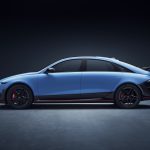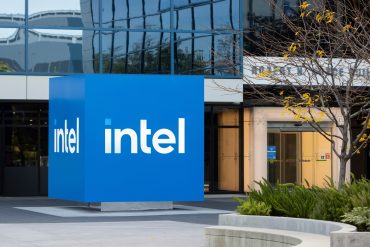
- Big Tech
- Earnings Season
- Magnificent 7
Tesla’s Q3 Earnings: Missed Targets, Measured Transformation
8 minute read

Tesla’s third-quarter report reveals short-term softness in earnings but long-term conviction in transformation—where cars, energy, and intelligence converge into one economic model.
Key Takeaways
-
Tesla reported Q3 revenue of $28.1 billion, up 12% year-on-year, while net income fell 37% to $1.4 billion and operating income dropped 40% to $1.6 billion as automotive margins tightened to 18%.
-
Energy storage revenue rose 44% to $3.4 billion, generating $1.1 billion in gross profit and marking the company’s most profitable non-automotive segment to date.
-
Shares declined 6% after earnings, but $41.6 billion in cash reserves and $4.0 billion in free cash flow highlight balance-sheet resilience amid a strategic transition toward energy and software-driven growth.
The Surface Numbers
The automotive industry’s disruptive darling delivered its third-quarter earnings on October 22, and the numbers tell a story of deliberate transformation rather than victory lap. Tesla posted $28.1 billion in revenue, marking 12 percent growth that would satisfy most corporations but arrives freighted with complications for a company whose valuation assumes not incremental progress but categorical reinvention.
Strip away the headline figure and a more textured picture emerges. Vehicle deliveries reached 497,000 units, up 7 percent year-over-year, with the Model 3 and Y workhorses contributing 481,000 units. Production, however, fell 5 percent to 447,450 vehicles—a divergence Tesla attributes to inventory discipline that compressed global supply days to just 10, down 47 percent from the prior year. This operational tautness helped generate $4.0 billion in free cash flow, a 46 percent improvement that underwrites the company’s expanding ambitions beyond the factory floor.
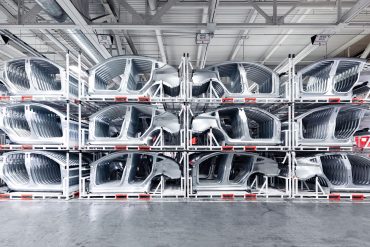
The Automotive Squeeze
Yet automotive revenues advanced only 6 percent to $21.2 billion, while gross margins compressed to 18.0 percent. The culprits are familiar to anyone tracking global trade: elevated tariffs, unfavorable product mix, and reduced fixed-cost absorption on select models. More telling, regulatory credits—the emissions-trading mechanism that has long padded Tesla’s bottom line—fell to $417 million, exposing the company’s sensitivity to policy winds in Brussels and Beijing. When European mandates soften or Chinese incentives shift, Tesla’s earnings statement registers the tremor.
Operating income collapsed 40 percent to $1.6 billion, a 5.8 percent margin that would trigger boardroom alarm at conventional automakers. But Tesla has stopped being conventional. Operating expenses surged 50 percent to $3.4 billion, with $1.6 billion directed to research and development and another $1.6 billion to administrative and sales functions. An additional $238 million went to restructuring—the awkward cost of shedding yesterday’s organizational weight while building tomorrow’s architecture.
Elon Musk characterized this spend as investment in “future business lines that we believe will drive incredible value for Tesla and the world across transport, energy and robotics.” Strip the promotional veneer and a starker truth emerges: the company is engineering its own obsolescence as a pure automotive manufacturer, betting that the economic logic of software will eventually eclipse the grinding realities of metal stamping and supply chain orchestration.
Energy’s Ascendance
The energy storage division provides the clearest evidence of this metamorphosis. Revenues jumped 44 percent to $3.4 billion, with gross profit hitting a record $1.1 billion—margins that would make any automaker weep. The segment deployed 12.5 gigawatt-hours of capacity, up 81 percent, positioning Tesla squarely in the infrastructure buildout that will define the next decade of energy transition. As renewables proliferate and grids strain under electrification mandates, Tesla’s Megapack and Powerwall systems transition from automotive adjacencies to standalone profit engines with fundamentally different economics.
The International Energy Agency projects grid-scale storage to quadruple by 2030, driven by the simple physics of intermittency: solar panels go dark at sunset, wind turbines still when air masses settle, and utilities face mounting pressure to balance load without fossil backup. Tesla’s recent unveiling of Megapack 3 and Megablock—designed to reduce deployment time and cost for utility-scale installations—signals intent to capture not merely a technology niche but the infrastructure spend that accompanies every gigawatt of renewable capacity added to the grid.
For institutional investors parsing valuation multiples exceeding 60 times forward earnings, this matters profoundly. Automotive sales remain cyclical, margin-challenged, and vulnerable to macroeconomic shocks. Energy infrastructure contracts, by contrast, promise steadier returns, longer revenue visibility, and less exposure to consumer sentiment. The question becomes whether Tesla can successfully arbitrage its automotive brand equity into energy infrastructure credibility before automotive margins erode further.
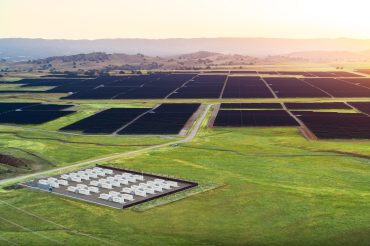
Balance Sheet Resilience
The balance sheet offers reassurance even as income statement pressures mount. Cash, equivalents, and investments grew 24 percent to $41.6 billion, while operating cash flow held at $6.2 billion despite headwinds. Capital expenditures fell 36 percent to $2.2 billion, reflecting both disciplined project selection and management’s confidence in asset-light growth vectors. This liquidity cushion—up $4.9 billion quarter-over-quarter—provides runway for what Musk acknowledged as navigation through “shifting trade, tariff and fiscal policy,” corporate euphemism for an increasingly fractious global trading environment.
Shareholder equity stands at $80.6 billion against total assets of $133.7 billion, a debt-to-equity profile that affords strategic flexibility. Yet net income attributable to common stockholders declined 37 percent to $1.4 billion, with diluted earnings per share at $0.39—a figure that would be unremarkable at Ford but raises eyebrows for a company trading as if it invented transportation itself. Adjusted EBITDA fared better at $4.2 billion but still fell 9 percent, with margin compression to 15.0 percent reflecting the R&D burden of simultaneously developing autonomous software, humanoid robots, and energy management systems.
Services and other revenues, which grew 25 percent to $3.5 billion through insurance premiums, supercharging fees, and maintenance contracts, offer a partial offset. These high-margin streams deepen customer lock-in and generate recurring revenue independent of vehicle sales. But they cannot yet counterbalance the automotive squeeze, which remains the financial center of gravity even as management’s attention clearly lies elsewhere.
The AI Gambit
The real wager emerges in Tesla’s artificial intelligence infrastructure, where capital allocation reveals strategic intent more clearly than any earnings call platitude. The company expanded its training capacity to 81,000 H100-equivalent GPUs—semiconductor firepower that rivals major cloud providers—enabling the October rollout of Full Self-Driving version 14. Musk described the update as improving “handling of complex scenarios,” the kind of incremental language that masks profound technical challenges: teaching silicon to navigate the chaos of human-designed roadways remains one of the harder problems in applied AI.
The Robotaxi service, now operating in the Bay Area and Austin with planned fleet expansions, represents more than autonomous showmanship. It embodies a business model pivot: monetizing vehicles through utilization rather than sale, extracting revenue from software and services rather than steel and batteries. If successful, this transforms Tesla’s installed fleet from depreciating assets into distributed computing infrastructure generating recurring revenue independent of manufacturing cycles.
The integration of Grok AI into vehicle interfaces, the deployment of Autobidder for virtual power plant coordination, and the forthcoming Cybercab all point toward a world where Tesla’s value derives less from units sold and more from intelligence deployed at scale. This is the software company narrative that justifies the valuation premium, the promise that margins will eventually resemble Microsoft’s rather than General Motors’. Whether that promise converts to reality depends on execution that has thus far remained more aspirational than demonstrated.
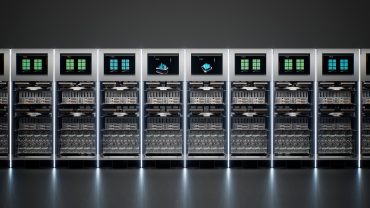
Strategic Implications
For policymakers, these results illuminate uncomfortable truths about industrial strategy. Tesla’s tariff sensitivities suggest that protectionist measures intended to foster domestic manufacturing may instead elevate costs and dampen adoption in price-sensitive markets—precisely the opposite of stated policy objectives. The regulatory credit decline underscores how quickly policy support can evaporate when political winds shift, leaving companies exposed to market fundamentals they may have neglected while harvesting subsidies.
Business strategists, meanwhile, should note the architectural lesson embedded in Tesla’s transformation. As hardware commoditizes—and Chinese manufacturers like BYD demonstrate that acceptable electric vehicles can be produced at aggressive price points—differentiation migrates inexorably to software layers and network effects. Tesla’s master plan envisions vehicles charging grids, grids powering factories, and AI orchestrating the entire system: a closed-loop economy where margin accrues to intelligence rather than fabrication, to coordination rather than production.
This represents a fundamental rewiring of automotive economics. The traditional model extracted profit through manufacturing efficiency and dealer networks. Tesla’s emerging model extracts profit through software updates, energy arbitrage, and autonomous utilization—revenue streams that scale with fleet size rather than factory output. The company with the largest installed base of internet-connected vehicles, equipped with the most sophisticated sensor arrays and trained on the most diverse driving data, potentially captures outsized returns as autonomy matures.
The Passage Ahead
The path forward carries execution risk that management’s confident pronouncements tend to obscure. Cybercab, Tesla Semi, and the Optimus humanoid robot remain promises rather than products, with volume production targeted for 2026—a timeline that may or may not prove more reliable than previous Tesla production forecasts. Musk’s guidance acknowledges that volume growth depends on “macroeconomic tailwinds and autonomy acceleration,” corporate speak for factors largely beyond management control.
More fundamentally, the transition from automotive manufacturer to AI platform requires demonstrating that autonomous software can achieve reliability levels that justify regulatory approval and consumer trust. Full Self-Driving remains a supervised system requiring human oversight, not the transformative robotaxi fleet that underpins the bull case. The gap between current capability and promised functionality represents not mere refinement but potentially insurmountable technical and regulatory hurdles.
What emerges from this quarter is a company threading a narrow passage between industrial maturity and technological transformation. Tesla retains operational excellence—record deliveries and deployments across regions attest to manufacturing discipline and market presence. The supply chain mastery that compressed inventory days by 47 percent demonstrates capabilities that most automakers would struggle to replicate.
But the automotive margins that once defined the bull case now contract under competitive and cost pressures that appear structural rather than cyclical. Chinese competitors produce credible alternatives at lower price points. European manufacturers, having absorbed a decade of painful lessons, now field electric lineups with improving software integration. The moat narrows.

The Proposition
For capital allocators and strategists navigating this inflection, the quarter offers a template for evaluating technology-driven transformation under pressure. Enduring disruption requires not velocity alone but the fusion of scale, innovation, and adaptability—precisely the combination Tesla built its reputation delivering. The company commands manufacturing scale that remains difficult to replicate. It controls the innovation narrative, whether justified or aspirational. The question is whether it can adapt its economic model from automotive supremacy to intelligence platform before automotive economics erode the financial foundation required to fund that transition.
Tesla no longer asks investors to believe in electric vehicles. It asks them to believe in the economics of artificial intelligence deployed at fleet scale, in energy infrastructure that monetizes grid volatility, in autonomous systems that transform idle assets into productive capital. That is a considerably harder—and more consequential—proposition than selling well-engineered cars to early adopters.
The third quarter of 2025 reveals a company where the easy growth has ended and the difficult transformation begins. Whether Tesla emerges as the infrastructure platform that justifies its valuation or retreats to automotive economics that render it merely excellent rather than exceptional remains the central question. The numbers suggest management recognizes this inflection. Whether recognition translates to successful navigation will determine if the premium proves prophetic or preposterous.


